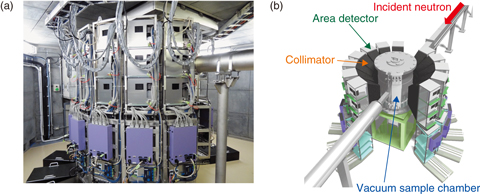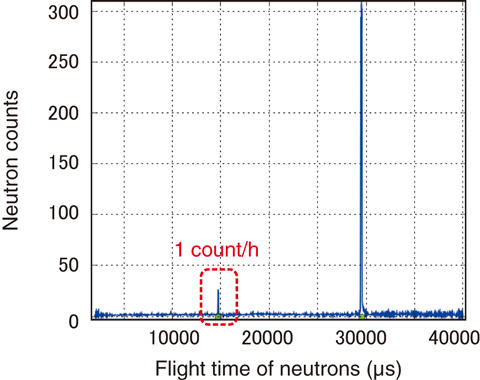
Fig.5-13 Photograph and schematic view of SENJU

Fig.5-14 Neutron-diffraction data for a small taurine single-crystal detected by SENJU

Fig.5-15 Sample rotation device for SENJU
Single-crystal neutron diffraction is one of the most fundamental and powerful techniques for determining the arrangement of light elements and magnetic moments in crystalline materials with high accuracy and reliability. Thus, this technique has been used in various scientific fields, including physics, chemistry, molecular biology, material science, and energy science, and has the potential to be an irreplaceable analytical tool for the development of new functional materials such as proton conductors, hydrogen-absorbing materials, and magnets. However, because a large (over 1.0 mm3 in volume) single-crystal sample is required, the number of experiments has been limited. Recently, we developed a new single-crystal neutron diffractometer called SENJU at MLF to alleviate this limitation.
SENJU has a vacuum sample chamber around which 37 area detectors are arranged cylindrically, as shown in Fig.5-13. Because the chamber and collimators were designed properly, a very low background was achieved; consequently, weak Bragg spots from the small sample crystal were significantly observed. In addition, large amounts of neutrons scattered from the sample were efficiently collected by covering a large solid angle with area detectors. Besides being used to achieve a high-intensity neutron beam at J-PARC, these features have also allowed diffraction measurements of 0.1-mm3-volume single crystals at SENJU.
As an example of such a measurement at SENJU, Fig.5-14 shows Bragg peaks of a single 0.1-mm3-volume taurine crystal measured by SENJU. Even though the intensity of the peak indicated by the red frame was very weak (only one neutron counted per hour), this peak was measured as a significant signal because of the low background of SENJU. 980 Bragg peaks of the taurine crystal (including such weak peaks) were collected over a 7-day measurement, and the molecular structure of taurine including hydrogen atoms was successfully determined.
At SENJU, a two-axis sample-rotation system at temperatures below 10 K was also developed using piezo-rotators that work under low-temperature and evacuated conditions, as shown in Fig.5-15. In previous low-temperature devices, sample rotation has only been possible on one axis and, consequently, some of the Bragg peaks required for structural analysis were immeasurable. Using the new sample-rotation system, almost all peaks required for structural analysis became measurable by SENJU, even under low temperature.
The measurable size of a sample crystal by SENJU is compatible with that for measurements of various types of physical properties. This means that the development of SENJU enables both crystal structure and physical properties to be determined with the same sample in the same condition. We believe that SENJU will open up a new frontier of material science using single-crystal neutron diffraction.